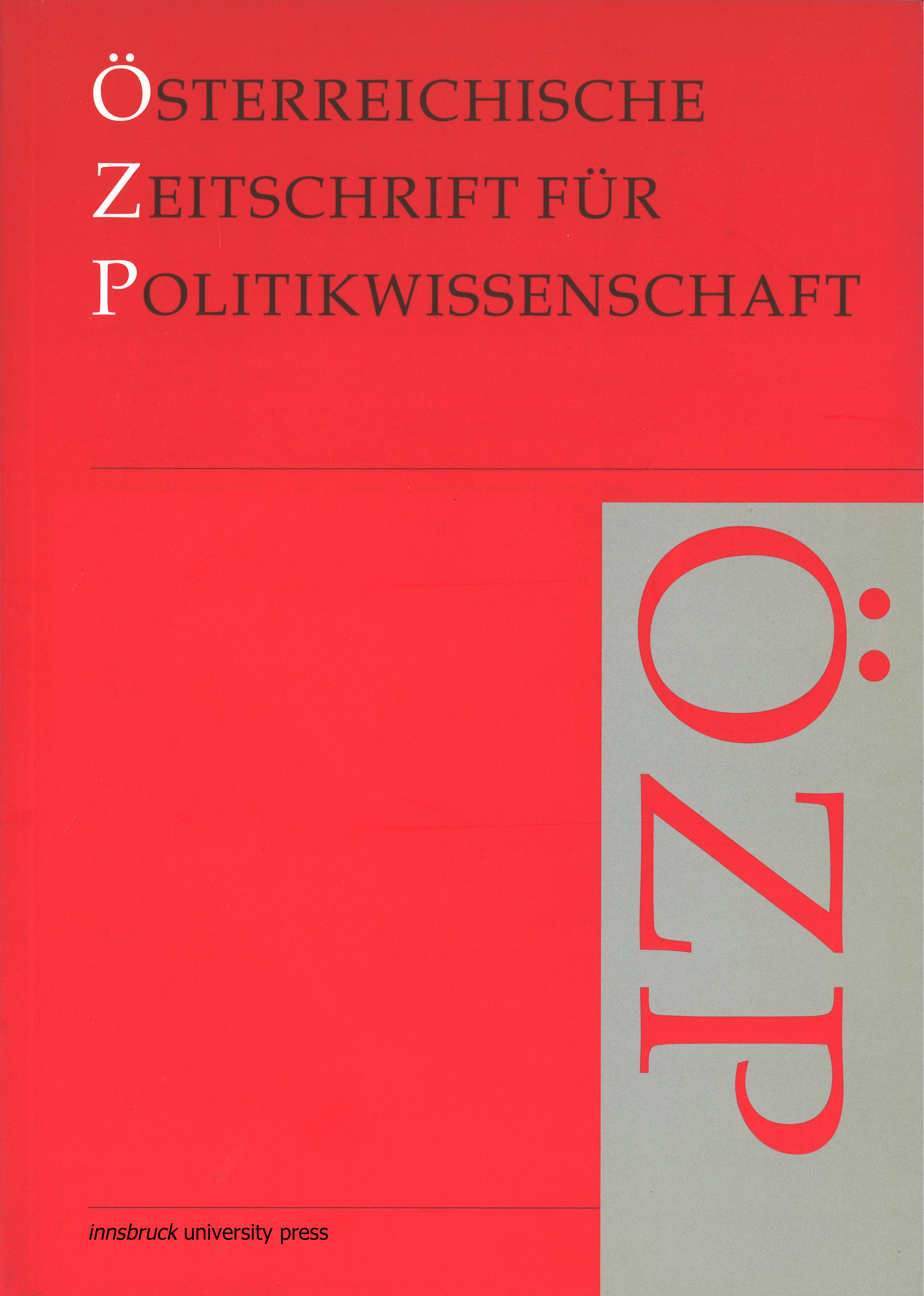Was verursacht die Aufwärtsspirale in der Umweltpolitik? Der Einfluss internationaler Harmonisierung auf nationale Umweltstandards
DOI:
https://doi.org/10.15203/ozp.636.vol41iss1Keywords:
Umweltpolitik, Harmonisierung, Regulierungswettbewerb, race to the top, race to the bottomAbstract
Die klassische Theorie des Regulierungswettbewerbs im Umweltschutz sagte im Zuge der Globalisierung Regulierungswettläufe nach unten voraus. Die empirische Evidenz scheint widersprüchlich, was auch an den verwendeten Maßen für das Regulierungsniveau liegt. Insbesondere die auf Umweltqualitätsdaten beruhende Forschung deutet eher auf eine Aufwärtsbewegung hin. Zur Erklärung für eine Aufwärtsdynamik gibt es in der Literatur einige kausale Vermutungen, jedoch bisher keinen breit abgestützten empirischen Nachweis. In diesem Artikel ergänzen wir zunächst die Theorie um einen weiteren Faktor, die internationale Harmonisierung, von der wir vermuten, dass sie eine Regulierungsbewegung nach oben verursacht. Anschließend testen wir die Theorie mit umweltpolitischen Daten aus 24 Ländern von 1970 bis 2005, wobei wir erstmals die Regulierungsniveaus direkt messen. Wir finden eine eindeutige Aufwärtsbewegung des Regulierungsniveaus, keinen Effekt ökonomischen Wettbewerbs und klare Belege für den Einfluss der internationalen Harmonisierung.
Downloads
Issue
Section
License
The OZP is the authorized quarterly publication of the Österreichische Gesellschaft für Politikwissenschaft (ÖGPW, Austrian Political Science Association)
The author of an article (in case of multiple authors: the corresponding author, responsible for releasing this material on behalf of any and all co-authors) accepted to be published in the OZP hereby acknowledges the following Copyright Notice:
- The author retains the copyright to the article.
- It is the responsibility of the author, not of the OZP, to obtain permission to use any previously published and/or copyrighted material.
- Publication of a submitted text is dependent on positive results from the peer reviewing. In such a case, the OZP editors have the right to publish the text.
- In case of publication, the article will be assigned a DOI (digital object identifier) number.
- The author agrees to abide by an open access Creative Commons Attribution (CC BY nc) license. The license permits any user to download, print out, extract, reuse, archive, and distribute the article in any non-commercial way, so long as appropriate credit is given to the author and source of the work.
- The license ensures that the author’s article will be available as widely as possible and that the article can be included in any scientific archive. In order to facilitate distribution, the author agrees that the article, once published, will be submitted to various abstracting, indexing and archiving services as selected by the OZP.
- In addition, the author is encouraged to self-archive the article, once published, with reference to the place of the first publication.
- After the contribution appears in the OZP, it is still possible to publish it elsewhere with reference to the place of the first publication.
- The finished article, if published, will include a correspondence address (both postal and email) of the author.
- If written under the auspices of a grant from one or more funding agencies, such as FWF (Austrian Science Fund), ERC (European Research Council), and Horizon 2020 (EU Framework Programme), an article accepted for publication has to be deposited in an Open Access archive. The OZP’s archiving policy is compliant with these provisions. (In case the article derives on funding from a different source, the author is responsible to check compliance of provisions.)




